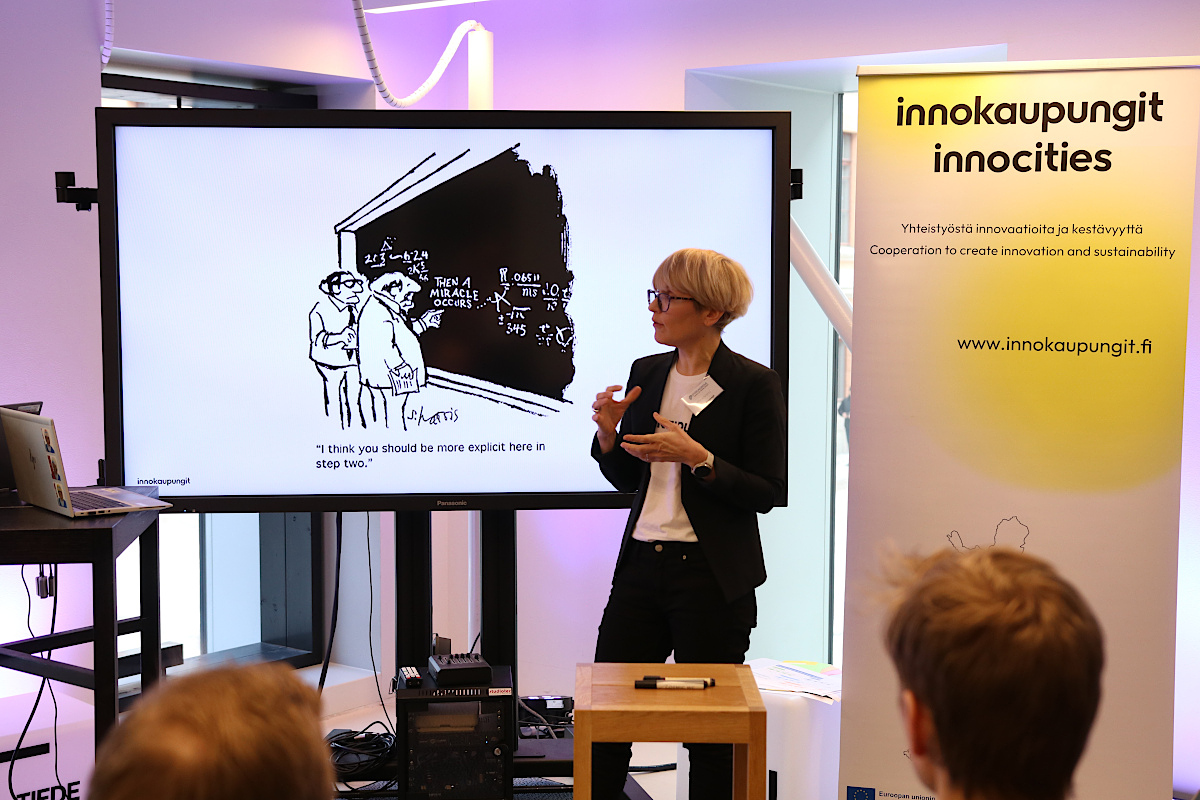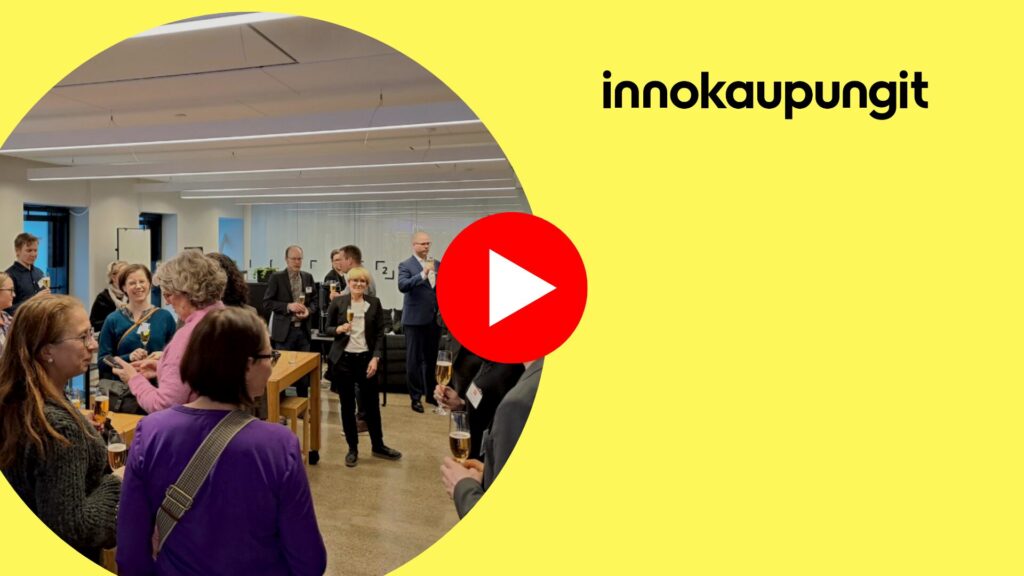All done: A common impact model for InnoCities

Over the past year, InnoCities have been building a common tool, an impact model, to support InnoCities’ development work both locally and nationally.
The purpose of the impact model is to help to understand complex causal connections and the common direction of cities in a holistic manner. It also supports learning and the assessment of the impact of operations.
The work to build the impact model was helmed by Kirsi-Maria Hyytinen and Johanna Leväsluoto from VTT. InnoCities’ operators have worked on the model in initial interviews, subsequent workshops, and impact clinics. Sparring for the work was provided by a group of experts from different cities and the National Secretariat of InnoCities.
“There is a lot of attention being given to ecosystem development right now, as we look for ways to accelerate innovation-driven growth. Partner cities with their competence areas play a significant role in this. It is important to know the direction and pace of development both in cities and at the national level,” says Mika Pikkarainen from the Ministry of Economic Affairs and Employment.
According to Pikkarainen, the challenge has been to build a common model that would work for all cities and would also provide a basis for the national development of ecosystem agreements. The newly created impact model will also be utilised in the interim assessment of ecosystem agreements, which will begin in the spring.
“The model provides tools for assessing the impact of RDI activities more broadly as well.”
Strategic impact assessment
The impact model can be used as a tool for setting the ecosystem’s goals. It helps to understand what kinds of impacts the development work is aiming for in order to improve the sustainability of society, the area’s innovation capacity and the pre-requisites for growth.
The impact model is supported by a set of indicators that provides an overview of the implementation. The indicators include InnoCities’ shared indicators as well as indicators chosen by each city.
“When talking about impact, it is easy to get lost in theory, models and often unclear cause-and-effect relationships. However, at the core of the work is the clarification of objectives, monitoring of activities with some indicators and continuous development. Hopefully, the impact model will also help the ecosystems’ developers communicate about their own work – and particularly about their successes – more clearly,” says Riina Niemi, a coordinator for InnoCities.
The impact model can be found in the workbook, which also includes a section on understanding and storifying the impact path of ecosystem work, as well as the Future Radar prediction tool.
The impact model and the understanding of cities’ own impact paths also support the monitoring of the implementation of the ecosystem agreements concluded by InnoCities.
The visual look of the tool was designed by Pirita Tolvanen.

Materials
InnoCities’ impact model (pdf)
